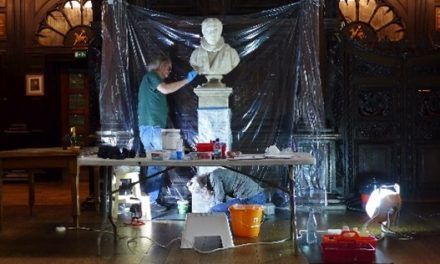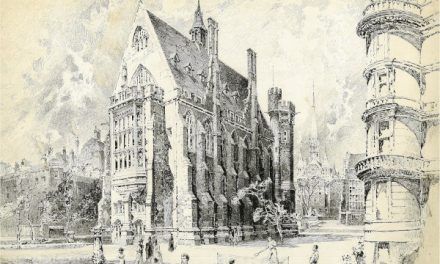Today, you’re reading the Middle Templar magazine online, on a computer, tablet, or smartphone – but will it still be possible to read in three centuries’ time? With the help of the Inn’s digital preservation programme, the answer is yes.
The first thing that comes to mind when many members think of the Middle Temple Archive may be a large room, full of leather-bound volumes, boxes of documents, architectural plans, photographs, and parchment stretching back to the early 1500s. But what will the archive look like in three hundred years’ time? The physical collections will still be there, of course, but now accompanied by a collection in the digital realm.
As we move into the digital age, the records that we produce, share and use – and therefore the records which are of historical value and worthy of retention in the archive – have shifted massively in format from physical documents to digital files and data. In the Inn’s Archive, we have been working to ensure that these digital records are identified, captured, and properly preserved so they can be accessed and used long into the future. Throughout this article I will dive into the world of digital archives, looking at some of the unique challenges they present, exploring some of the collections we are currently preserving for future generations, and how this is done.
The Challenges of Digital Archiving
Digital records present many new challenges. Just as archivists and conservators have for many years worked to overcome issues of mould, deterioration, pest activity and more when dealing with physical records, digital material presents its own concerns that must also be dealt with, to ensure the records’ longevity, integrity, trustworthiness, and accessibility.
One infamous challenge is the matter of obsolete file formats – sadly all too familiar a problem, given the continual and quick advances in technological capabilities. One might imagine that a Word document or PDF file will be accessible forever, but already we face difficulties accessing files created in the 2000s as current software cannot render the same technology it requires to be viewed.
Physical media can also present a headache – from the late 1990s and well into the 2010s, many digital records were saved and shared on floppy disks (if you remember those!) and CD-ROMs. These media don’t last forever and are highly susceptible to damage and corruption, leading to the loss of information stored on them. Even when stored on hard drives and networks, files are at risk of data degradation known as ‘bit rot’, eventually becoming unusable.
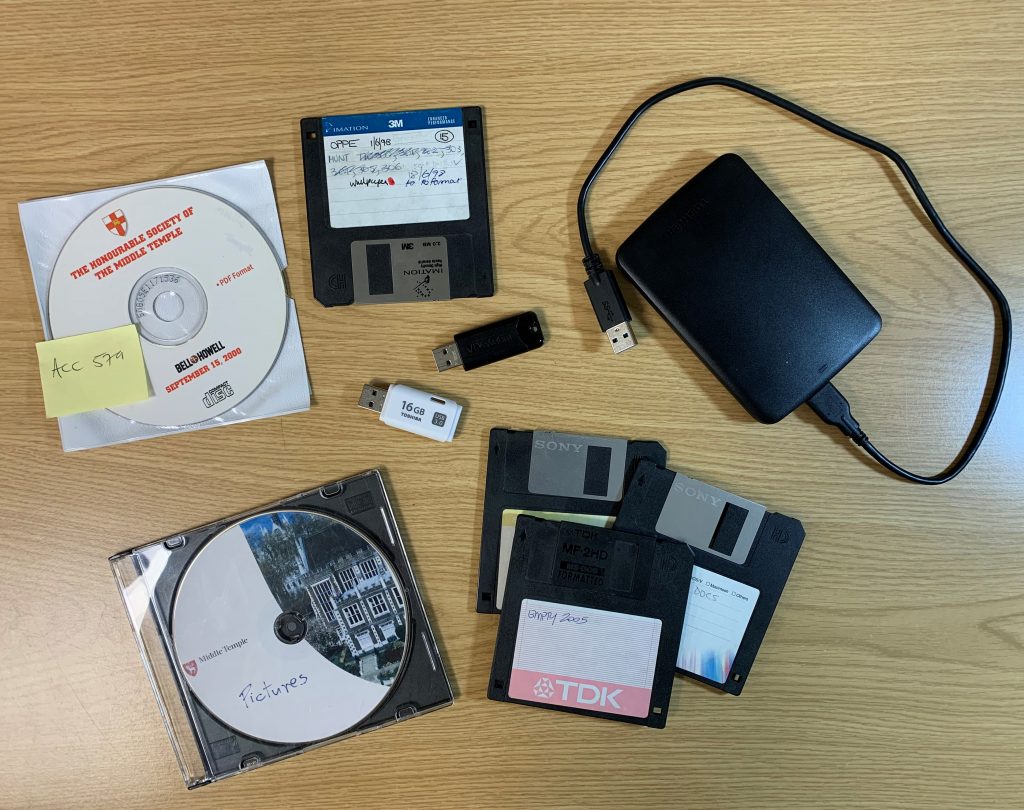
A critical test for digital archivists is the sheer quantity of records and data that are produced. It was noted by Forbes Magazine in 2018 that we had produced 90% of the data which exists in the world in just the two years prior – consider how much data is being produced in 2022!
For an example of this, take a single event held at the Inn today. Previously, we might have collected the organising committee’s minutes, a flyer, a menu and maybe a couple of photographs – if we were lucky! Compare this today with countless emails sent between the organising committee, social media promotional posts, digital ticket invitations, menus and potentially hundreds of photographs taken at the event.
This makes the work of an archivist increasingly challenging. One issue that arises from this volume is the time-consuming nature of assessing and appraising these records to identify those of business importance and archival and historical value. Once the records themselves are sorted, there is the question of digital storage space – which inevitably comes at a cost. While physical documents can straightforwardly be boxed and stored in an environmentally controlled archive repository, where they can remain safely for centuries, digital records vary massively in size and must be maintained on a server or drive. This means that important decisions must be made – as it is not a simple matter of deleting something else to create space.
Solutions
To tackle some of the challenges of digital preservation, the Inn uses a system called ‘Preservica’ – a web-based digital repository which acts as the primary storage location for our digital archives and encompasses a range of active digital preservation solutions. The data is stored on the cloud and backed up across several servers in different locations, providing further protection against data loss in the event of a disaster. Preservica runs automatic and regular checks of data integrity to mitigate against bit rot and other forms of corruption.
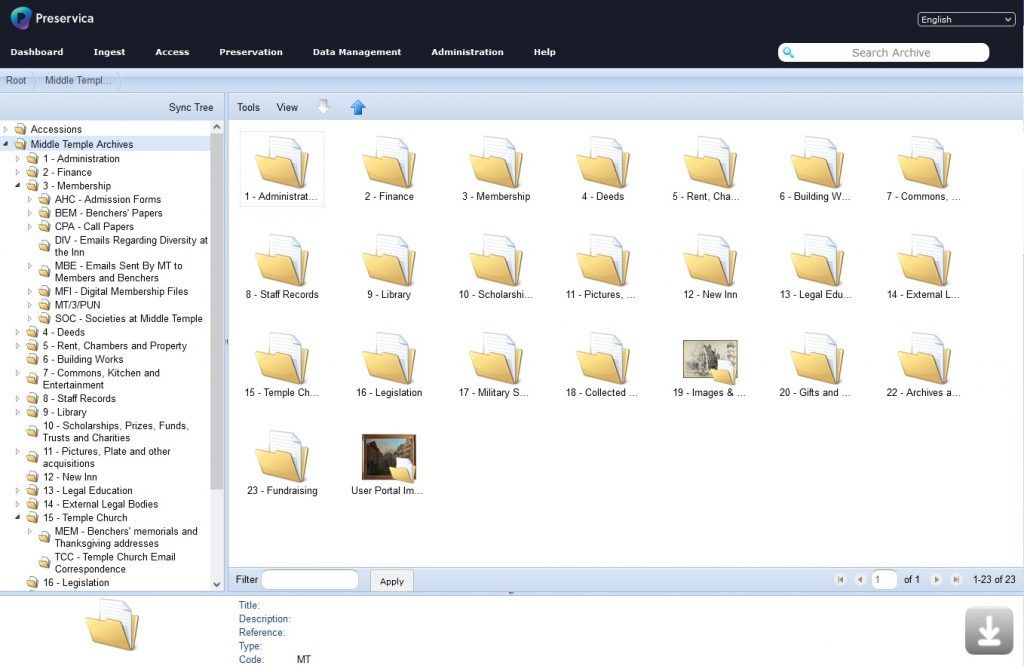
To tackle the degradation of physical media, all records existing on CDs and floppy drives in the archive are being removed from this external media before becoming inaccessible and are transferred into Preservica.
To tackle the problem of file format obsolescence, we can use Preservica to employ the technique of ‘migration’, in which the system can create a new ‘representation’ of the record. For example, many audio files exist in Preservica in the .WAV format, but we found that there were difficulties in playing this, particularly through the web, due to lack of readable technology. To overcome this, Preservica was able to create new ‘representations’ in an mp3 format (while maintaining the original format and content) to enable these to be played.
Digital Records at the Inn
Just as with our physical records, the Middle Temple has a diverse range of digital born records which are increasingly being appraised, collected and archived. One growing collection includes the core membership records of our members which are now paperless and are transferred to the archive as pdfs. Another large collection of digital records is the photographs from events, such as royal visits, garden parties, Grand Days, MTSA events and more. We are also retaining catering records such as lunch menus, audio-visual recordings including Bench Call speeches, communication material such as newsletters, and more. We are working to establish a system of transfer of key digital records from other Inn departments to ensure and safeguard the retention of material of long-term business need and permanent historical value.
The care given to these digital records matches that given to our physical records: We ensure that they are well-preserved, securely kept (and closed where sensitive), and accessible for internal needs and external research.
Preserving the Middle Temple Website
Digital records are far more fluid than physical archives and keeping up with constantly changing and evolving material is another challenge in digital preservation. The Inn’s own website is one example of an output which is often changing but worthy of capturing for posterity. One way we preserve this is to perform a web crawl of the Inn’s website: this not only collects all the information but allows the viewer to use the site and click through to different pages, as one would when originally using it, thus simulating the user experience. These web crawls are taken every quarter and allow us to see the changes taking place on the Inn’s website, thus providing a picture of the changes happening at the Inn: the events, initiatives and individuals which characterise a particular moment in time for the organisation. As one can see below from the snapshot of the 2013 website, much has changed over the past decade.
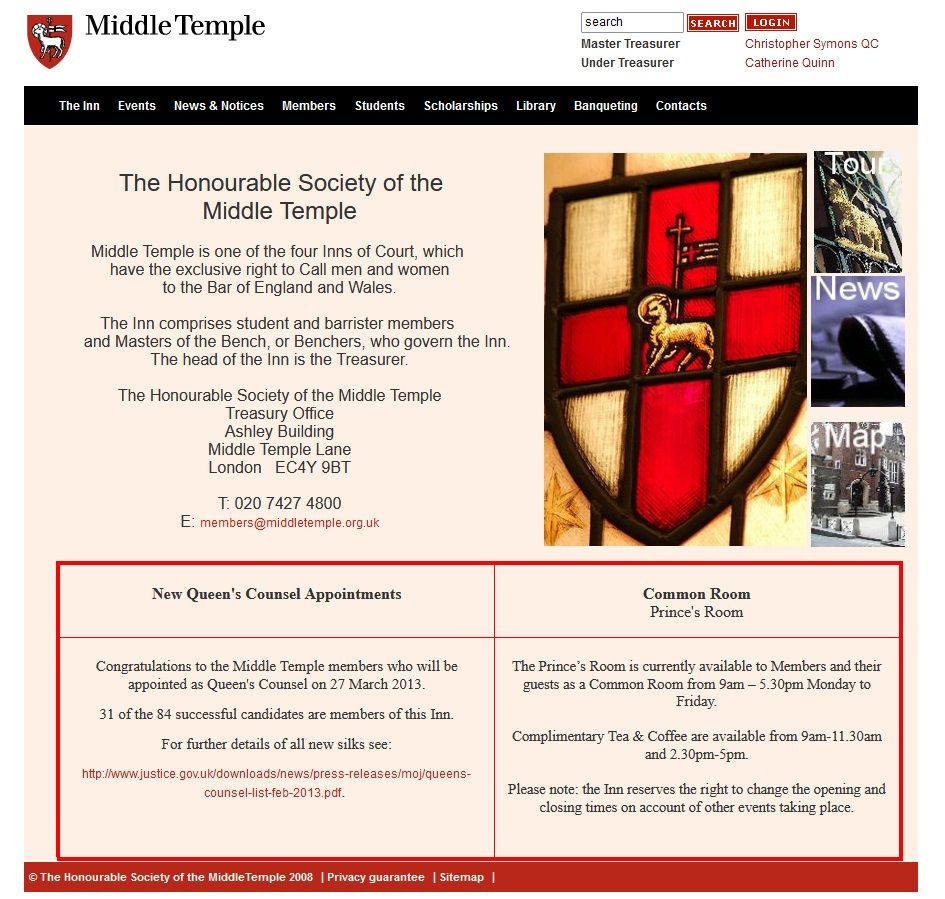
We also capture and preserve the websites of the Temple Church, MTYBA, Middle Temple Venue and Middle Temple Shop websites.
Preserving Middle Temple’s Social Media Posts
Fifteen years ago, social media didn’t even approach many of our radars, but today there are estimated to be 45 million active social media users in the UK alone (66% of the entire UK population). We, as a society, put a vast amount of data and information on these sites, including event promotion, life updates, views and opinions and advertising. However, if this information isn’t collected and archived, it will one day be lost to the world.
Through our digital preservation software, Preservica, we can automatically ‘harvest’ tweets once they are posted, thus also maintaining a further record of the Inn’s online presence. One key feature of this process is that it preserves the original layout and structure of the tweet, rendering it as it was originally seen to the viewer.
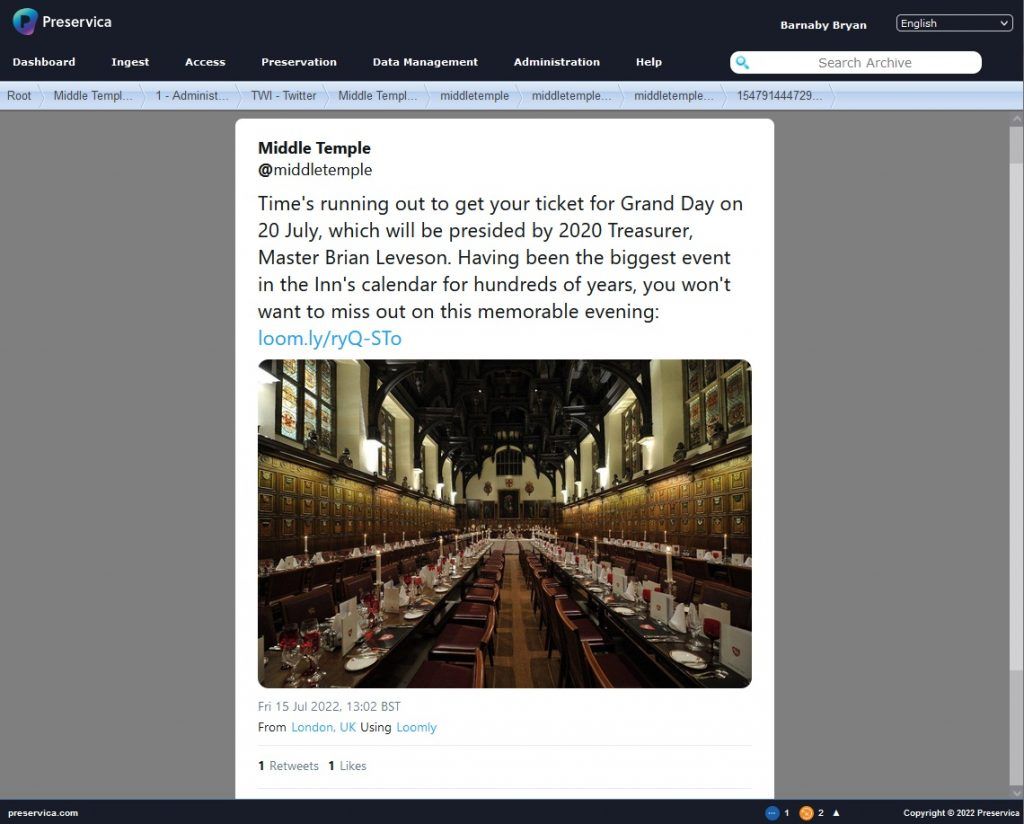
While it is important to preserve the information produced in a record, the original form of the record itself is also of considerable archival value in enabling the understanding and interpretation of a record in its original context. Therefore, it is important, if possible, to preserve both and maintain original structure. With this technology, social media posts are archived, searchable and viewable in their original format forever – even if Twitter itself no longer exists in 100 years!
Accessibility of Records
A great advantage of digital records, and digitised physical records, is that it is possible to share a version of these with large numbers of users who may previously never have been able to access them physically, through the web. For example, on the Middle Temple Website, anyone in the world can access and search the Registers of Admission 1501-1975, the Treasurers’ Receipt Books from 1637-1922, plus the Minutes of Parliament 1501-1919 – and much more! It is of course important to remember that the digitisation of a physical record can never replace or supersede the original, which as the original and most trustworthy source for information, will always be maintained and preserved.
The digitisation of physical records also allows for archival content to be communicated more effectively to our members and beyond, through inclusion in social media posts, online articles (such as this one), virtual exhibitions, promotional material, and in items such as menus, programmes, and brochures. A prime example of this would be the digital display created for Queen Elizabeth II’s Platinum Jubilee using digitised copies of photographs and ephemera illustrating our associations with Her Majesty, as well as born-digital photographs from events over her seventy-year reign.
Conclusion
While digital preservation is now a critical aspect of modern-day archival practice, it is still in its early stages. Constant technological developments require all archivists and preservation systems to act and adapt quickly to ensure the preservation of records before data degradation, obsolescence and the retirement of original technology render them inaccessible.
While one may see digital files as easier to create, use, share, save and maintain, it’s a never-ending race for archivists to keep up with technology, avoid the loss of important and business-critical data and information, and ensure that a rich, representative, accurate and accessible historical record is passed on to future generations.
Copyright – Middle Temple Archives

Francesca qualified as an archivist at the University of Glasgow in 2019, joining the Inn’s Archive Department later that year as Project Archivist, progressing to Assistant Archivist in 2021. She works on a variety of different projects, including the preservation of the Inn’s digital records.

